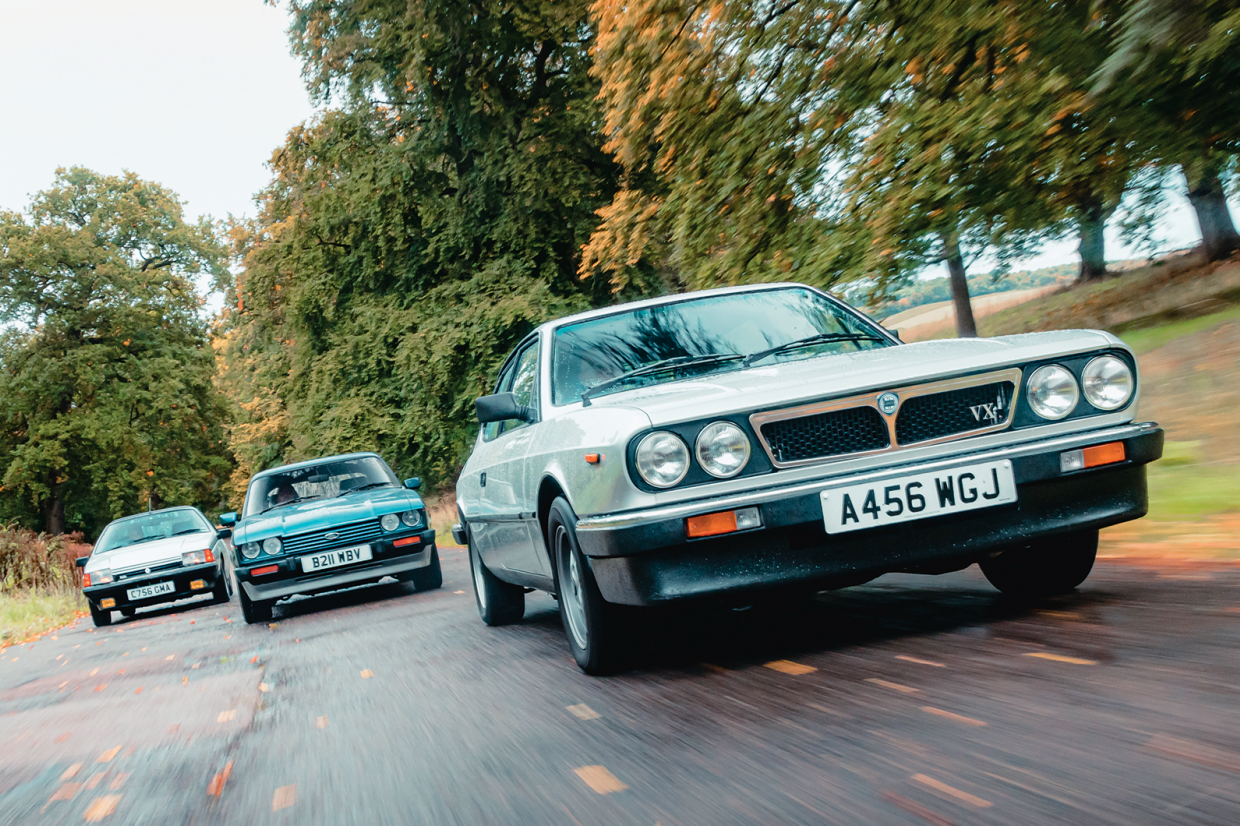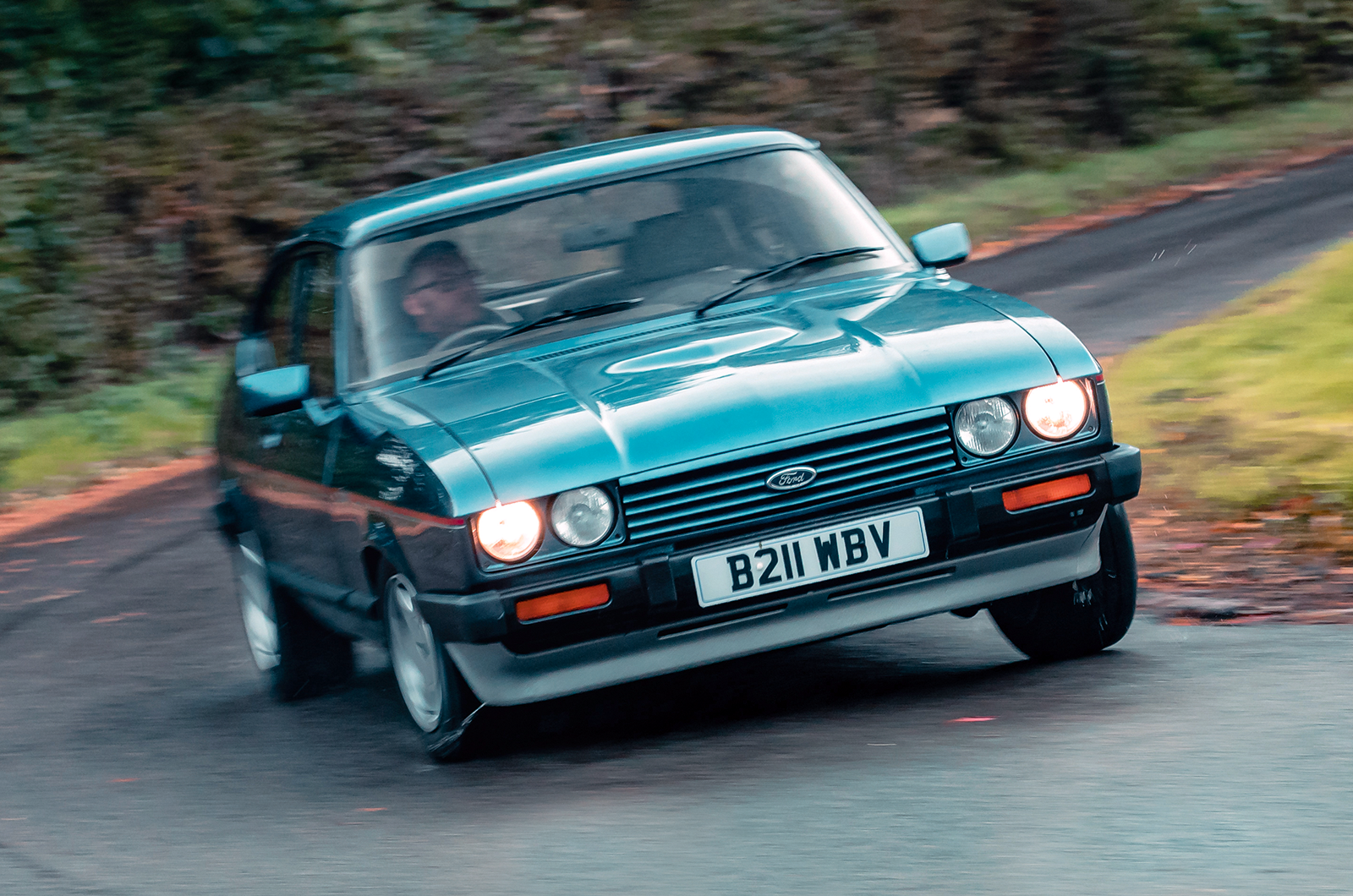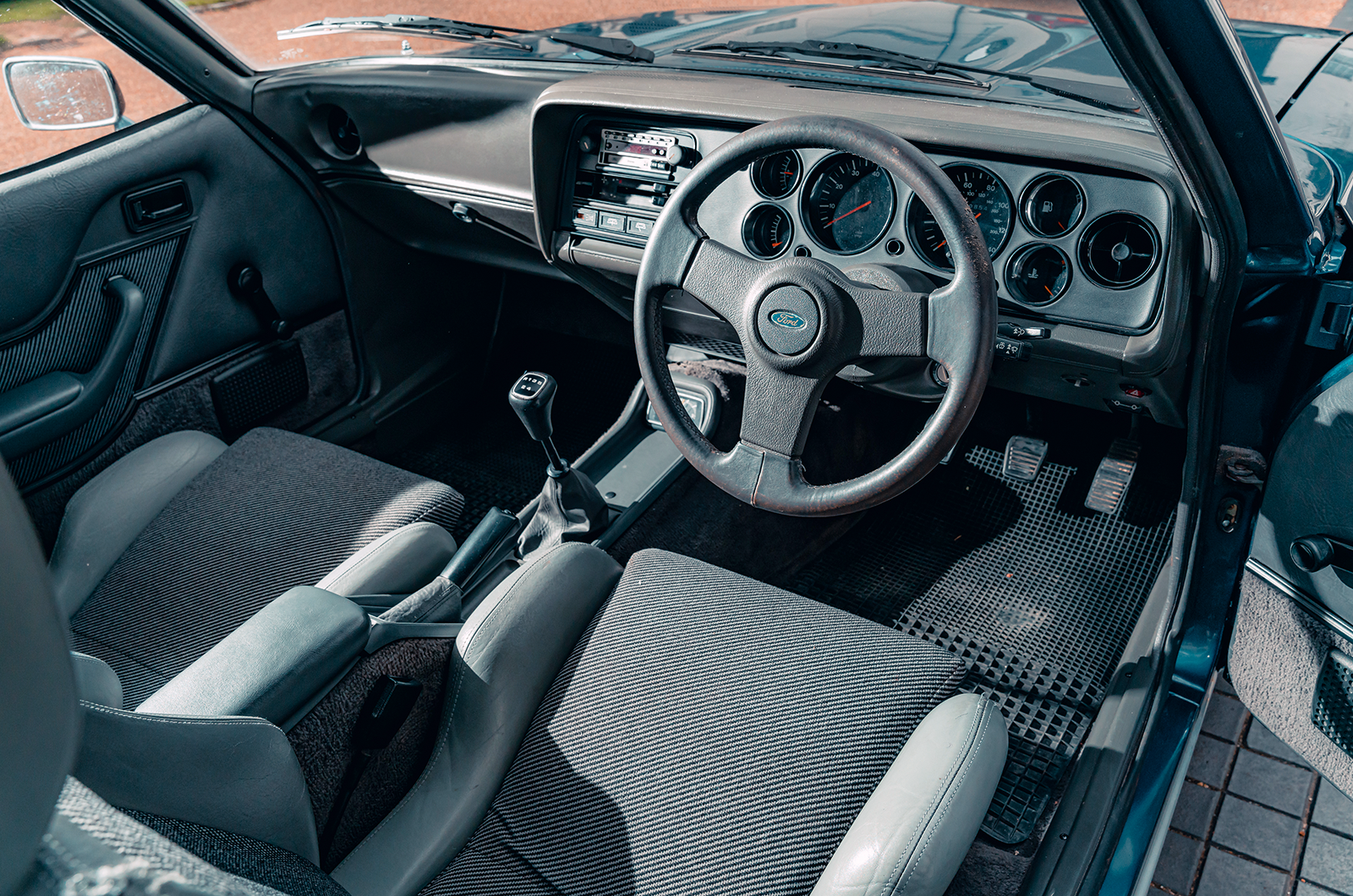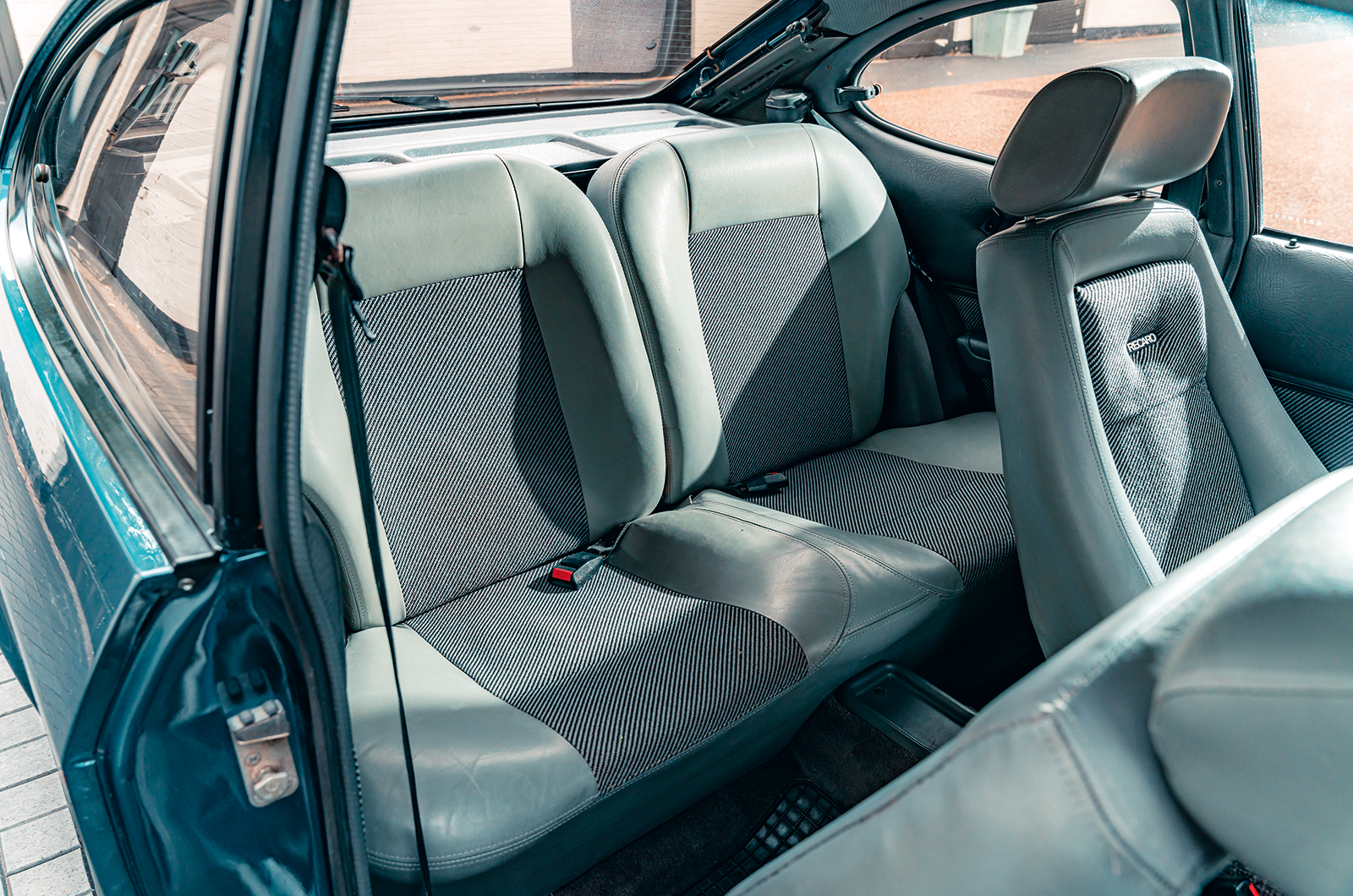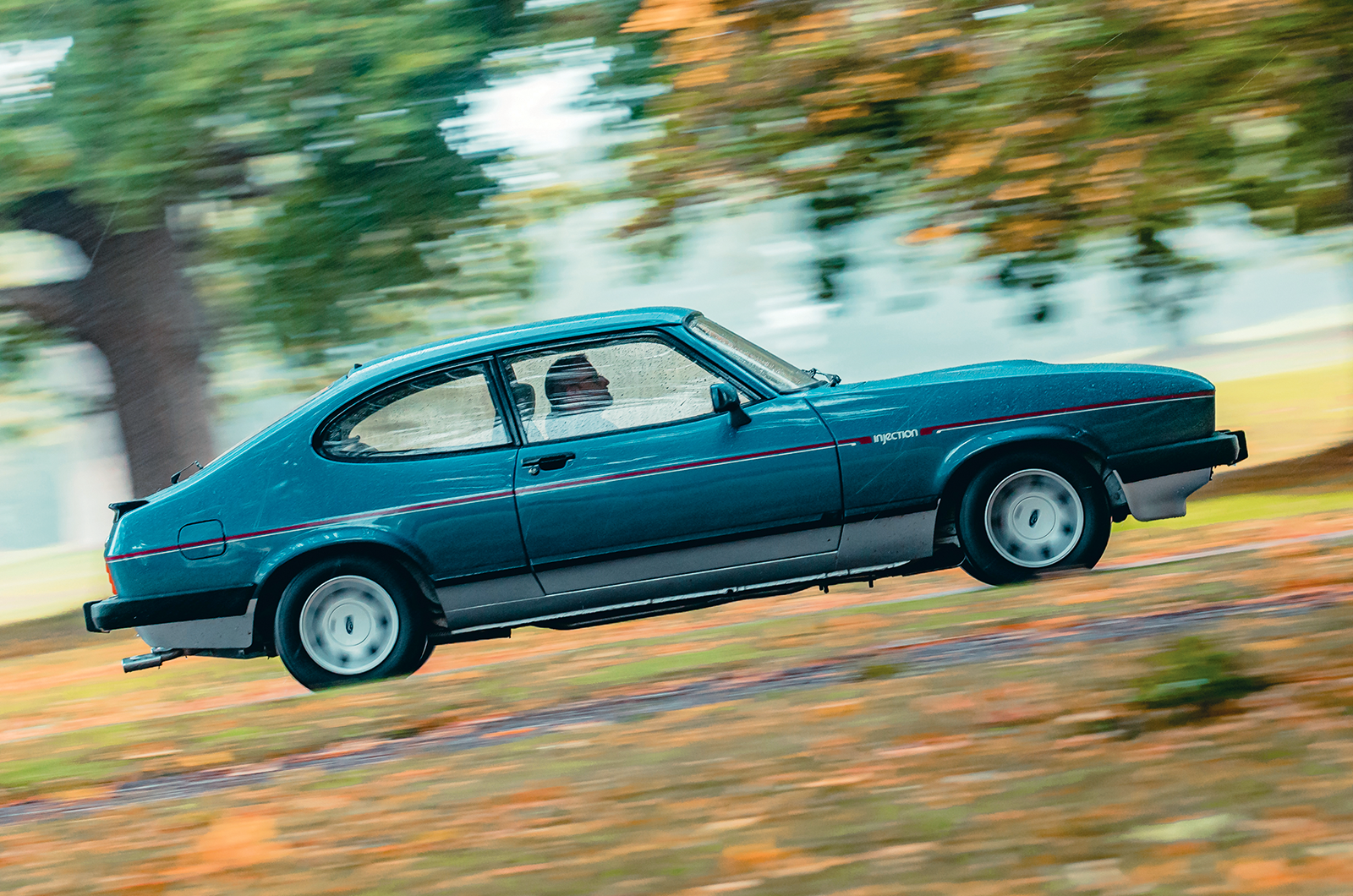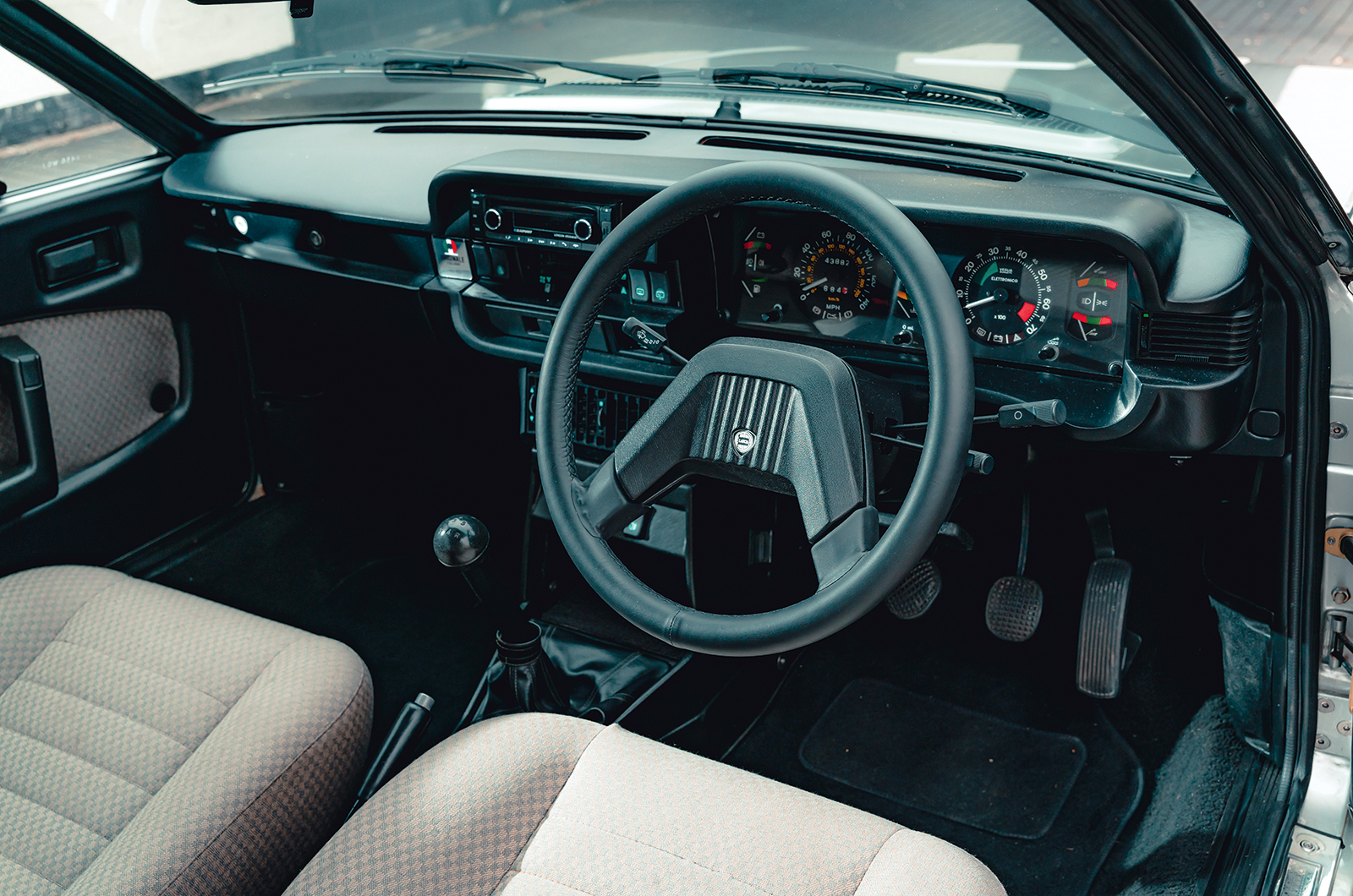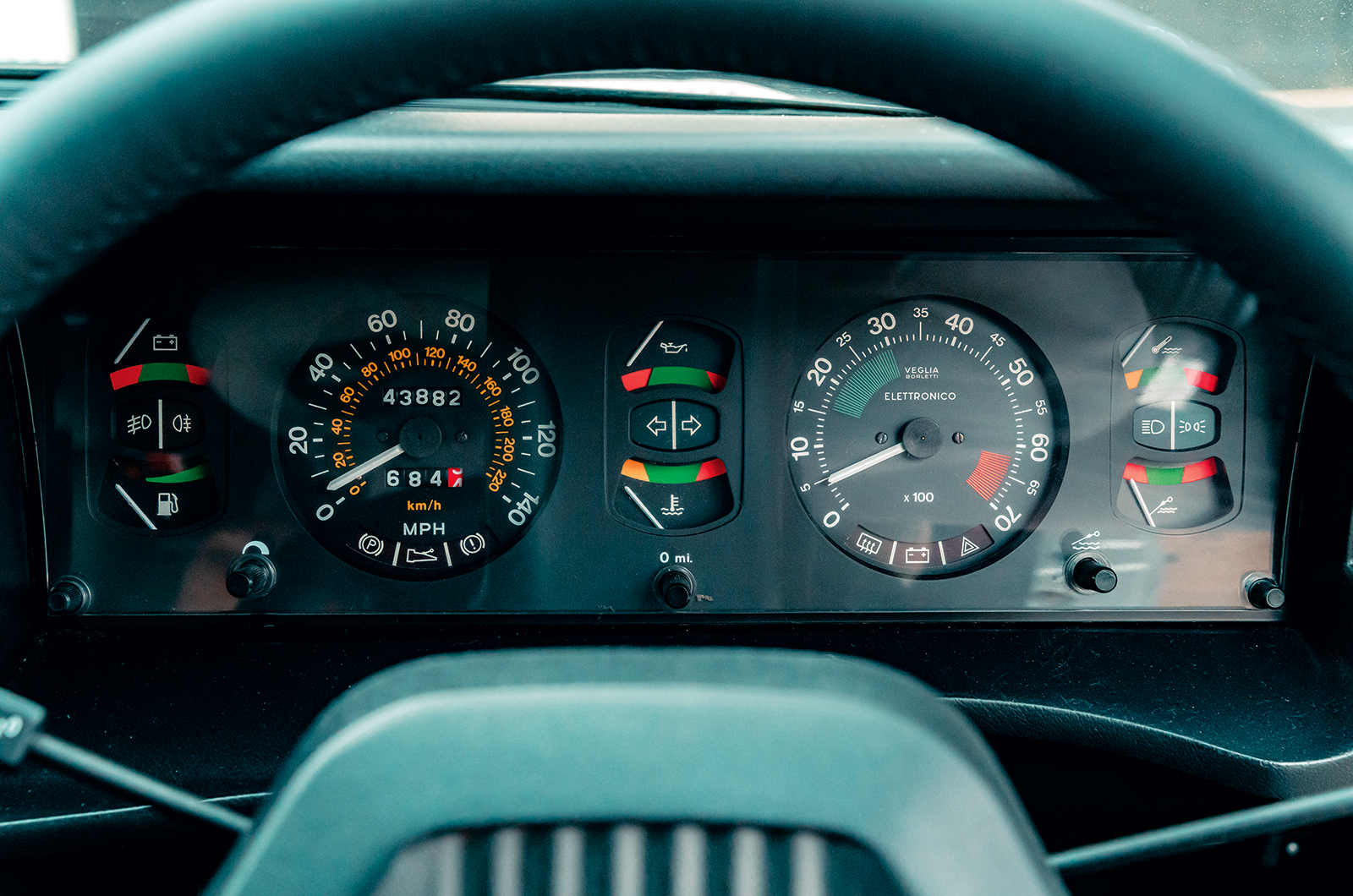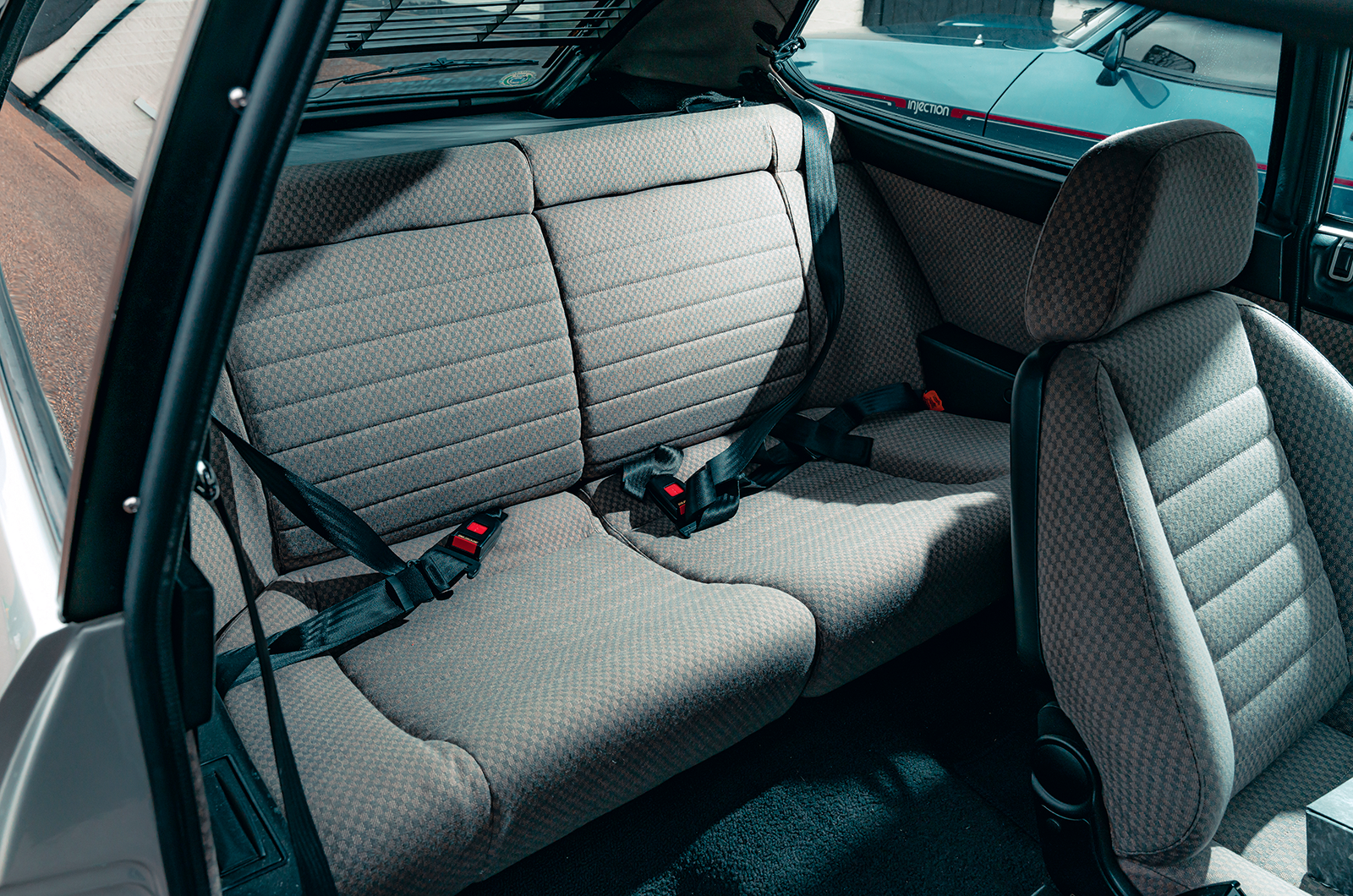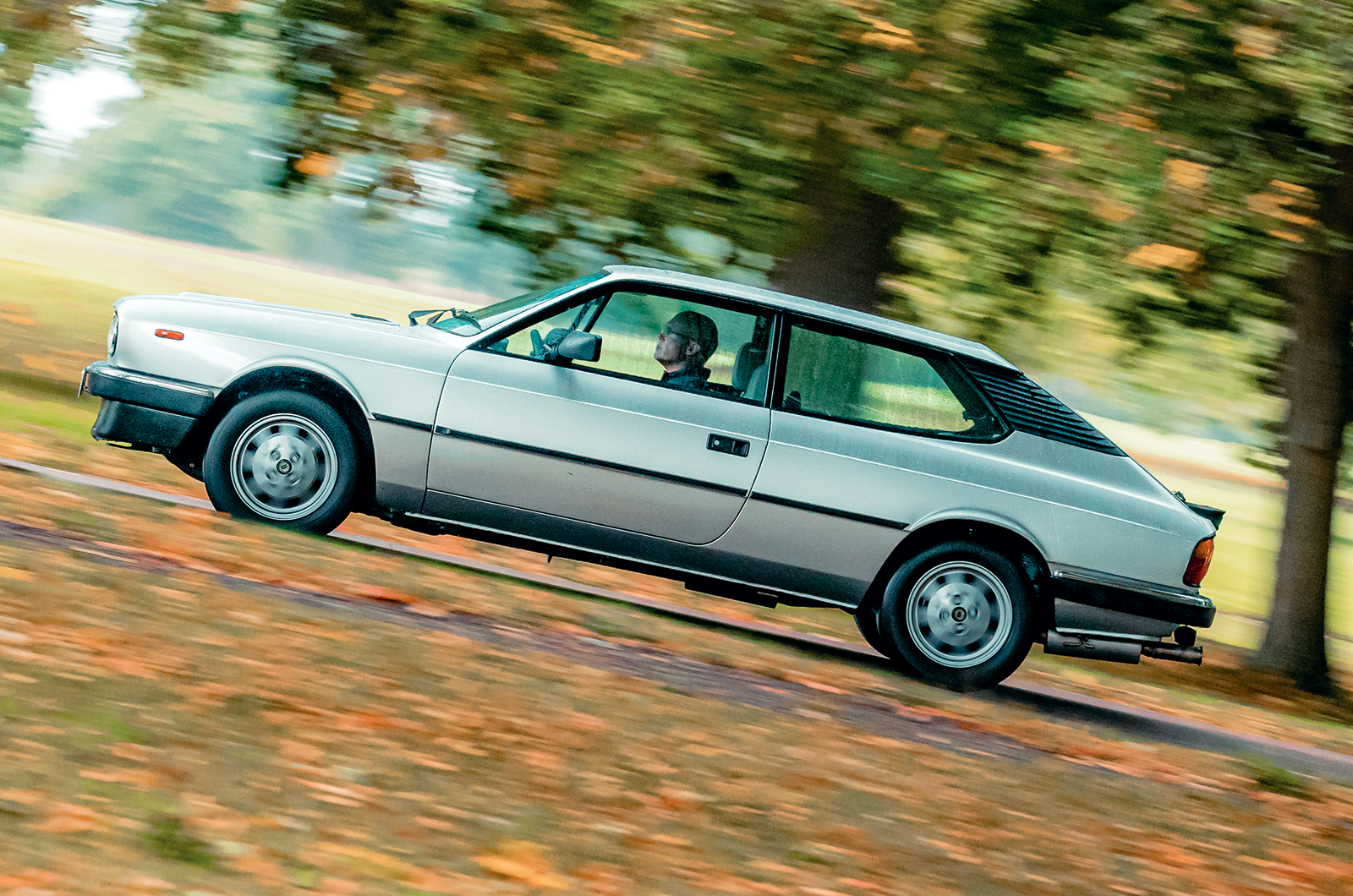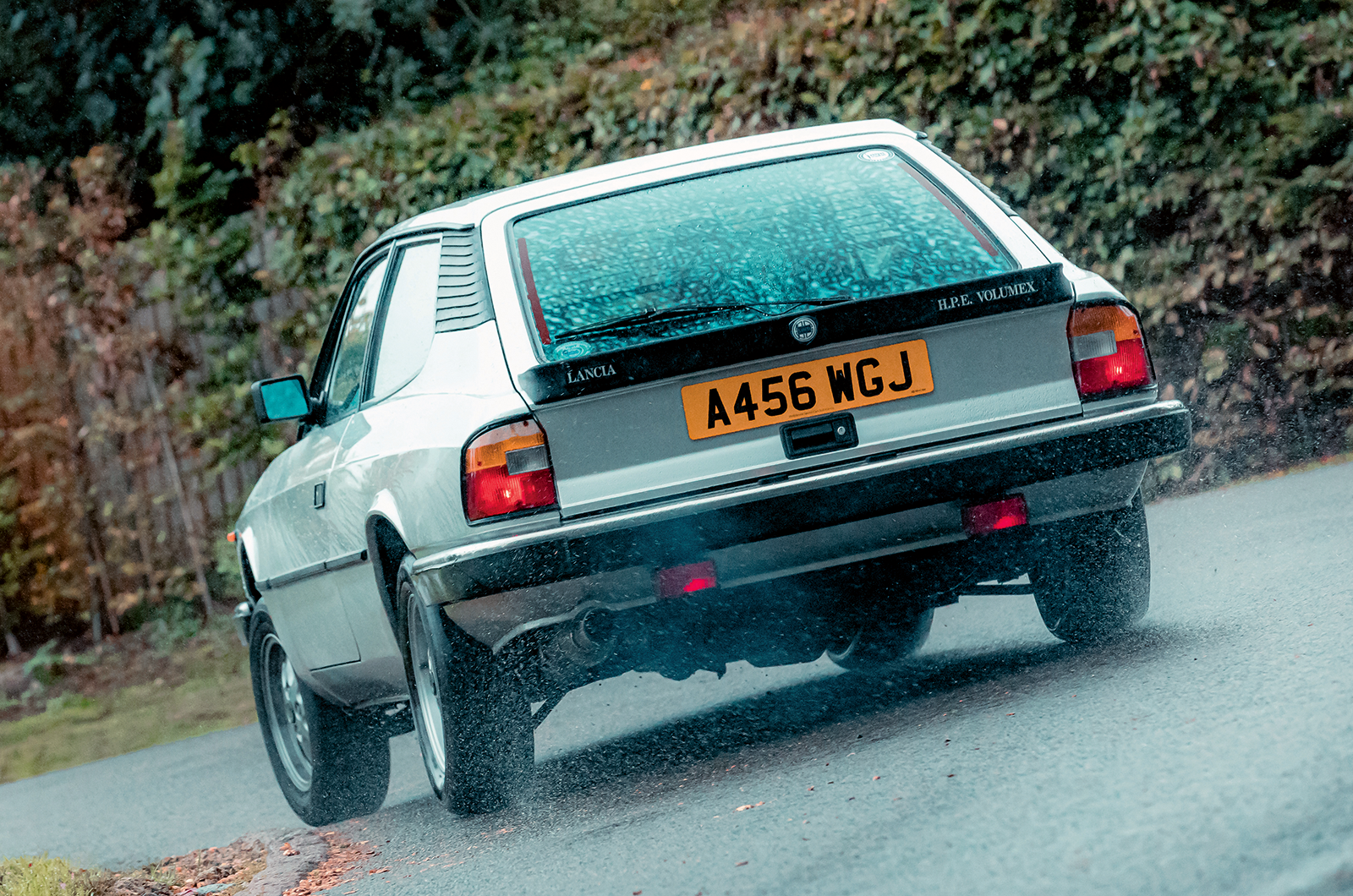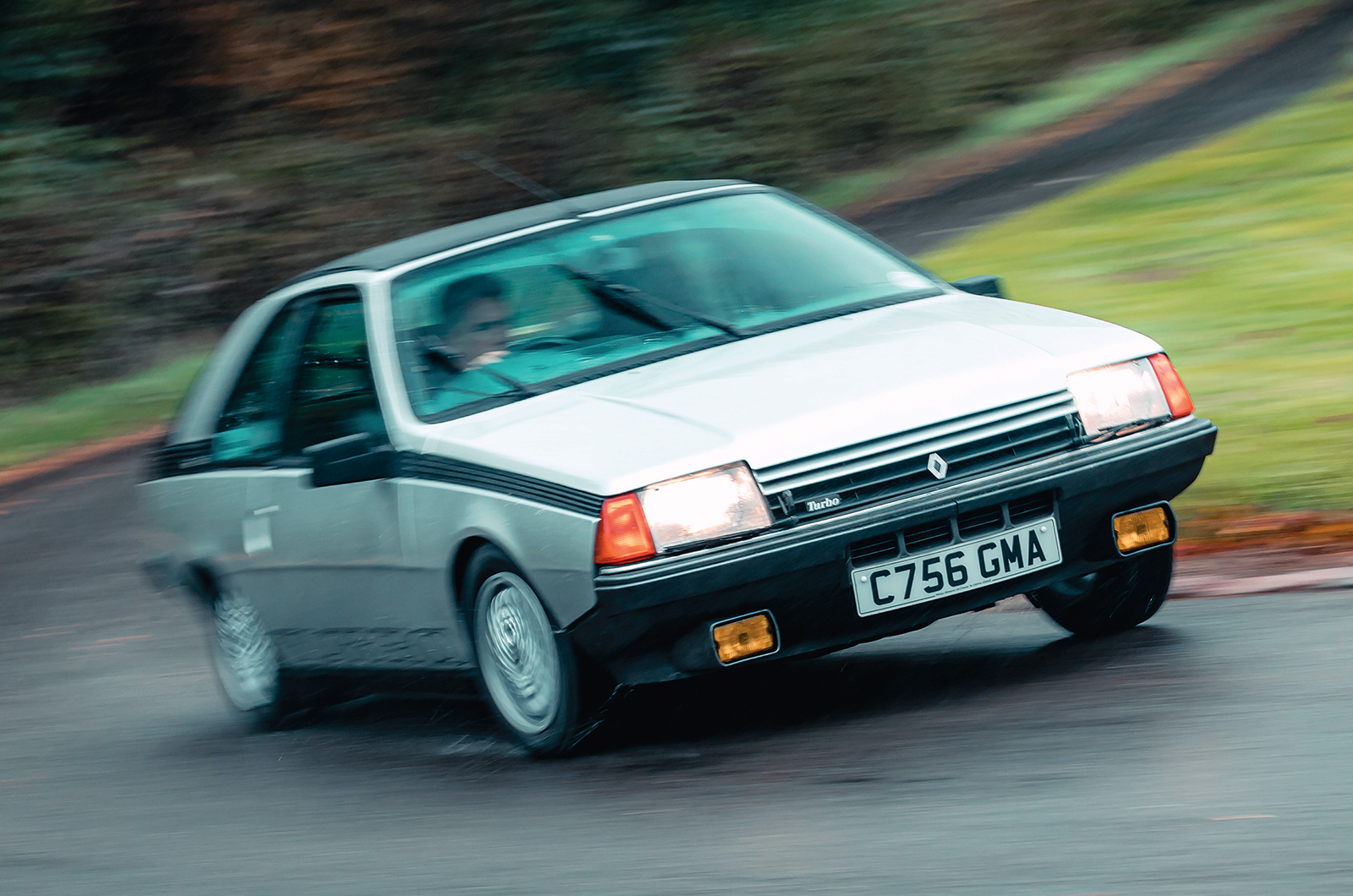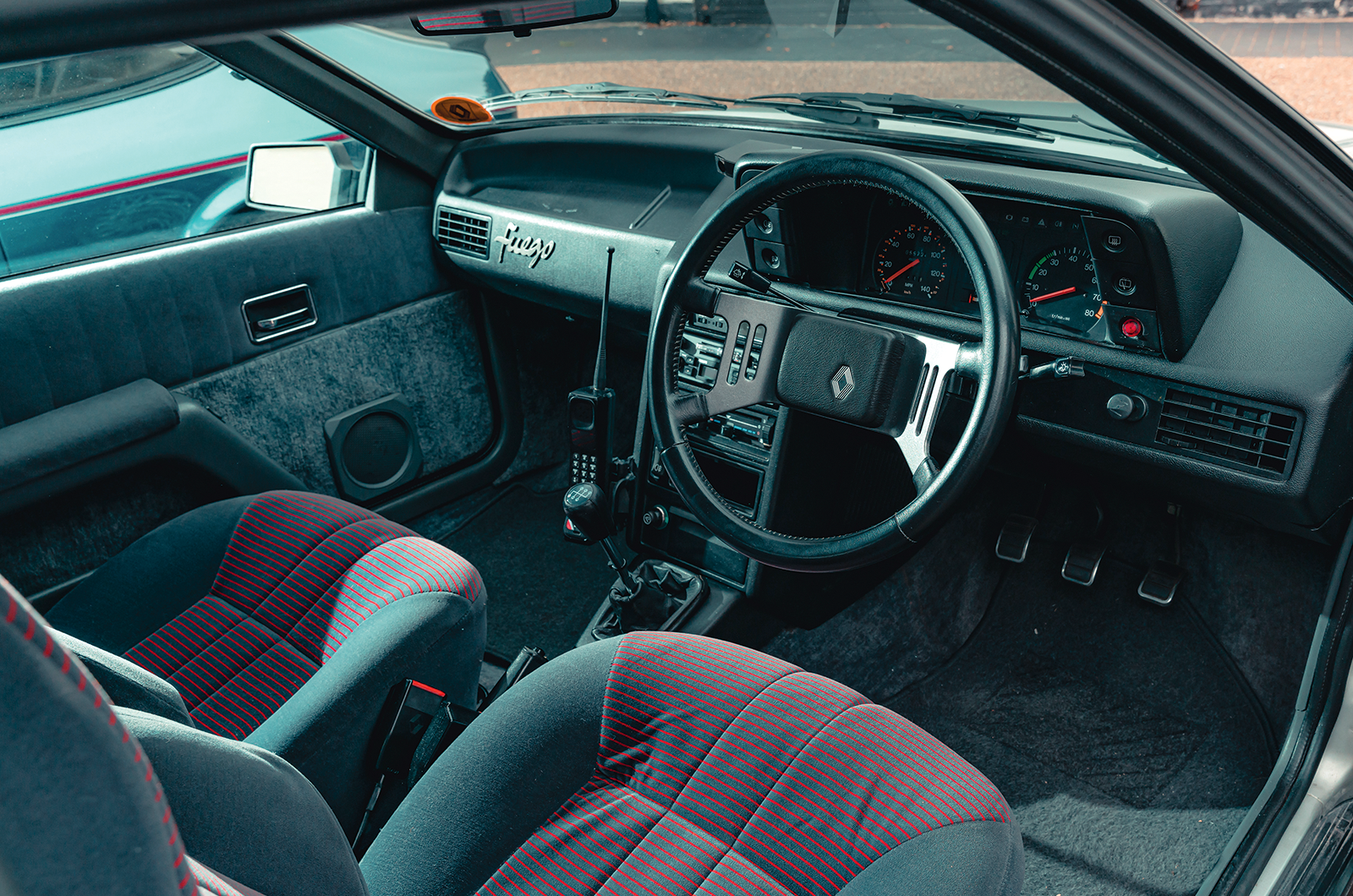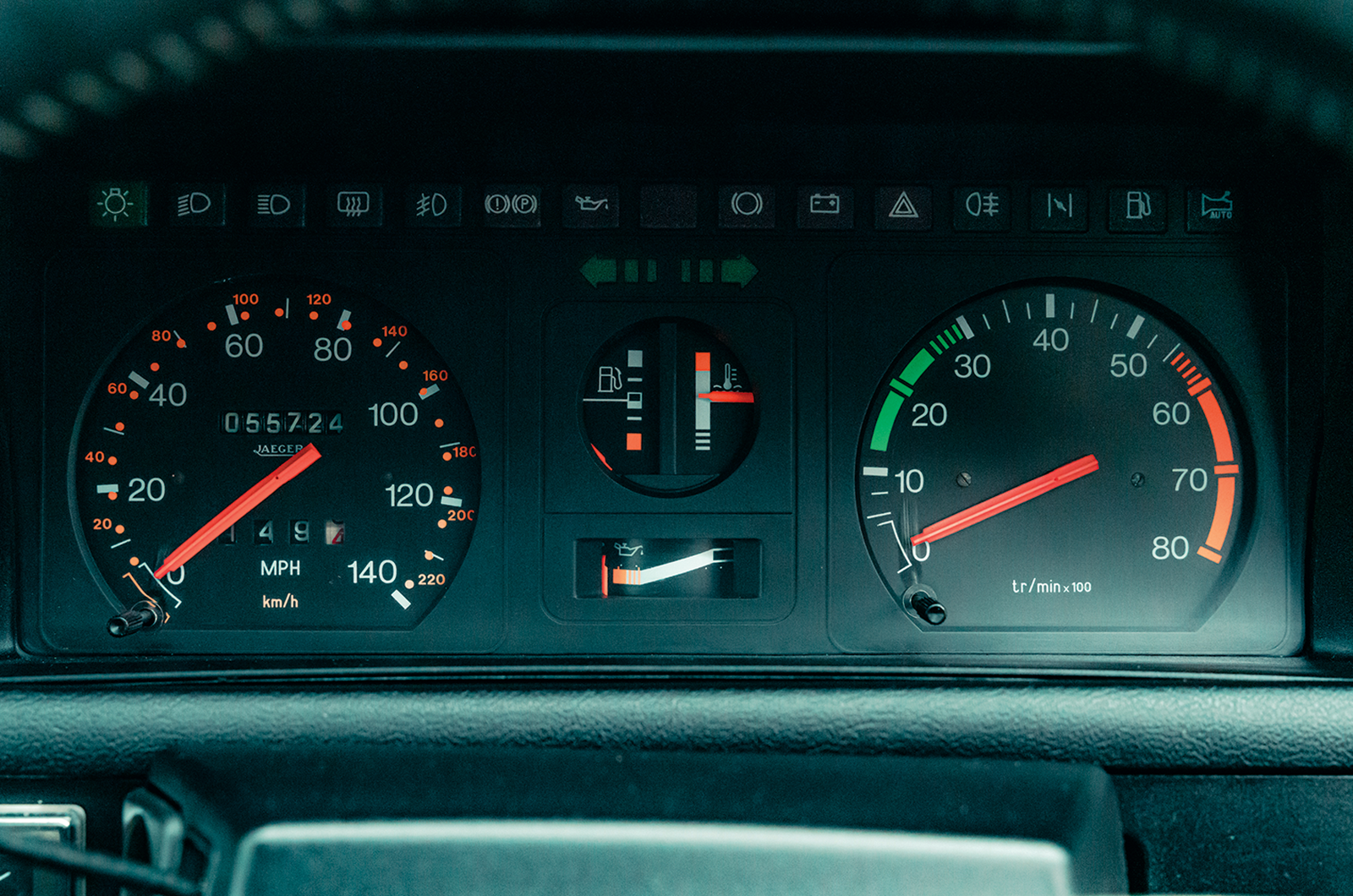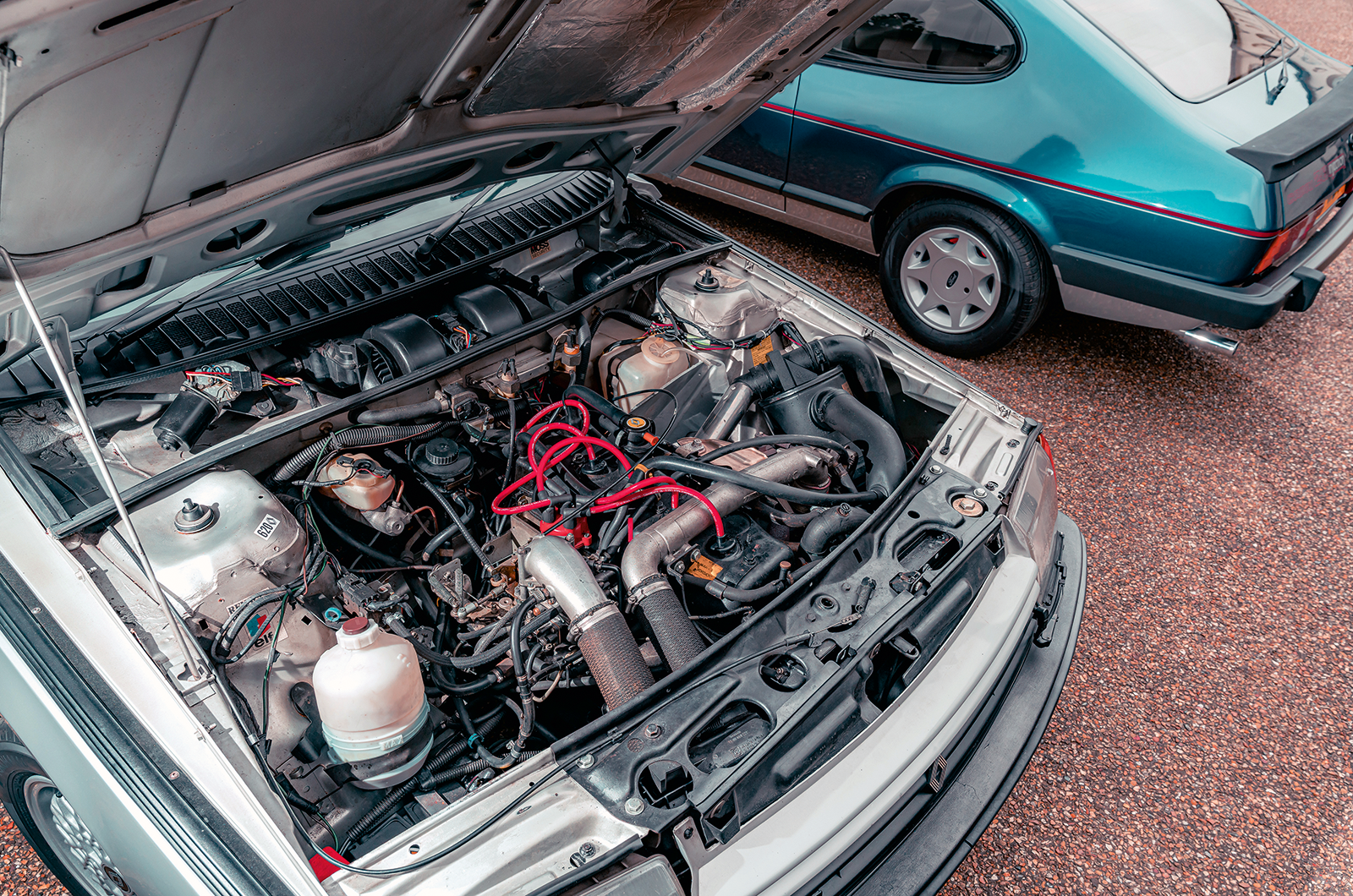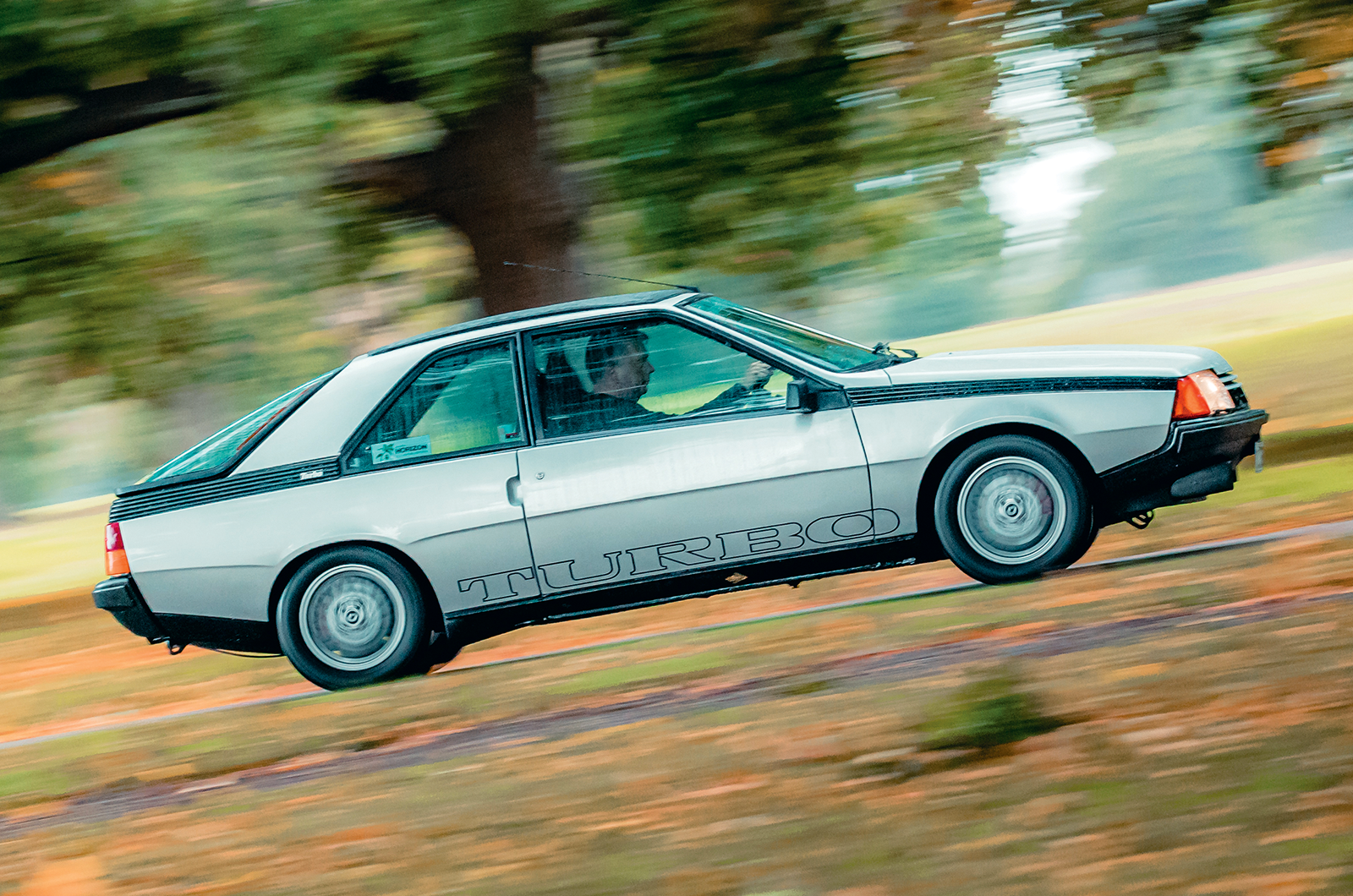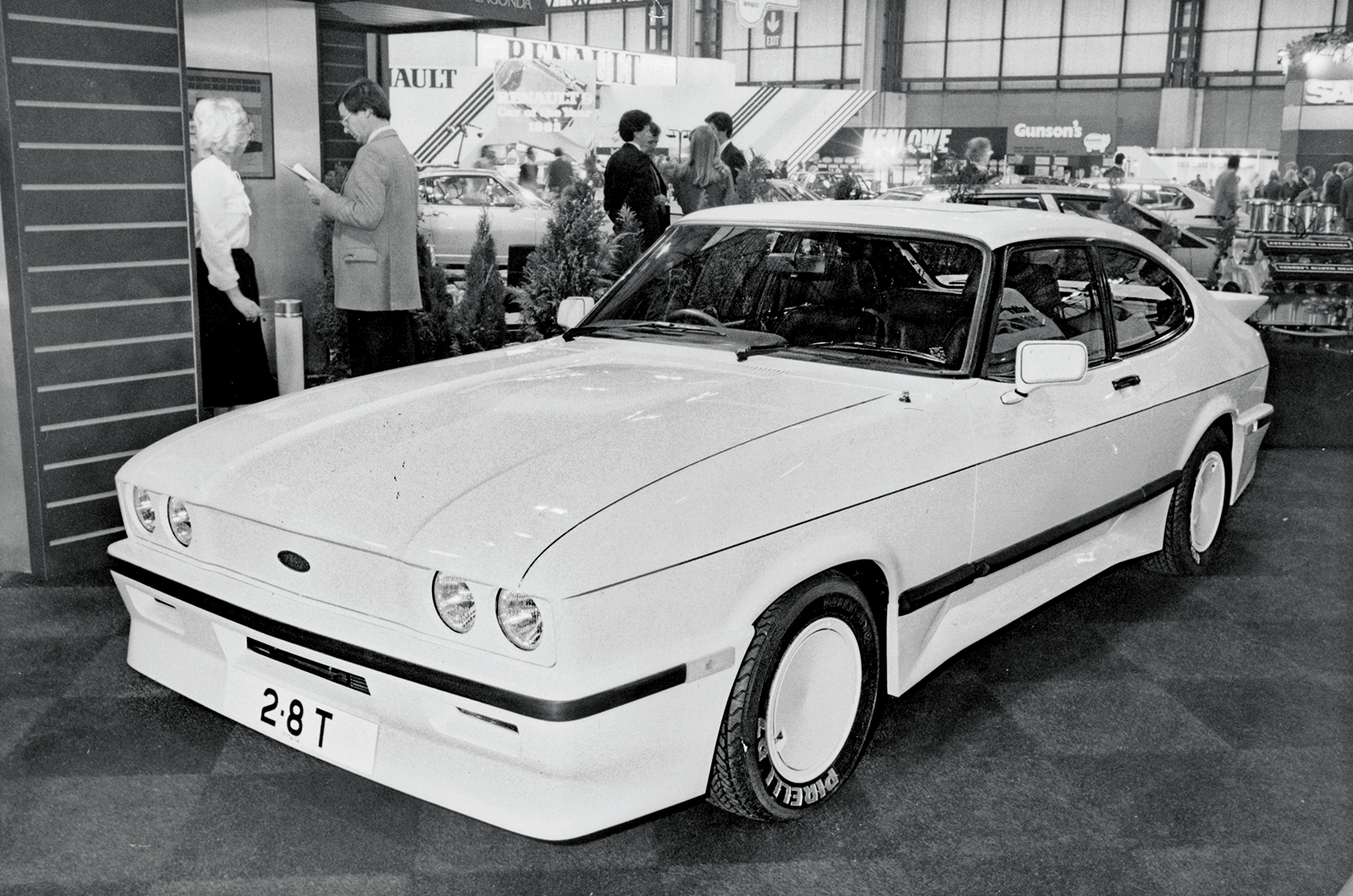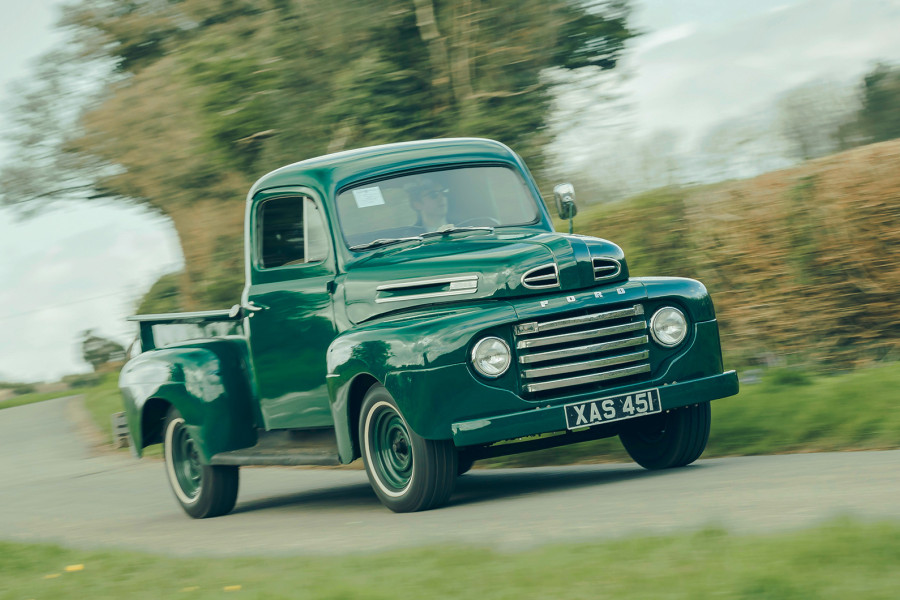By the simple expedient of replacing the suspension bushes, Thurston’s car feels taut and well screwed together, with not a squeak or rattle to be heard.
Out on the road, the Capri has the least wind noise and the most forgiving ride. But take to the twisties, and the contrasts with the Lancia (and, as it will turn out, the Renault) are felt straight away through the steering wheel.
Where the front-wheel-drive cars provide bite and precision, the Capri’s steering, while nicely weighted and linear, betrays its old-school, rear-drive roots with a vagueness that’s exacerbated further through poorly surfaced bends by the rear suspension’s relative lack of control.
The Renault has a well-equipped cabin
The brakes, too, demand a concerted shove from high speeds for meaningful action, although they’re always progressive and pedal spacing is comfortable for heel-and-toeing.
And then there’s that V6 engine: despite producing 25bhp more than the Lancia’s blown twin-cam, it needs to be worked hard beyond 4000rpm to locate those extra horses, though I’d imagine many drivers would willingly trade its mellifluous exhaust note for the lack of low-down urgency.
Which brings us back to turbocharging and the Renault. Whatever your thoughts are about the Fuego’s styling, it’s demonstrably the most modern-looking car here, with Mark Powling’s 1985 example more akin to a ’90s coupé than one launched in 1980.
There’s only a faint whistle from the Renault’s turbo, which comes in above 3000rpm
It was also the world’s first car to have remote central locking.
Invented by Frenchman Paul Lipschutz (hence being known as the ‘PLIP’ system), the device still works today – though you have to be next to the car for it to function.
Once ensconced in the squishy embrace of the Renault’s contoured driver’s seat, you’re presented with a well-laid-out fascia, a dished four-spoke steering wheel and, of all things, a multi-function trip computer screen set into the centre stack; heady stuff back in ’85.
A Garrett turbocharger meets a Solex carburettor in the Fuego
Move away, though, and that low compression ratio equates to tepid acceleration until the engine is well into its stride at more than 3000rpm, after which performance is brisk, if never breathtaking.
In fourth gear, from 30-50mph, Motor recorded a time of 7.7 secs for the Fuego Turbo, versus 8.5 for the Ford and 6.4 for the Lancia, and this still feels about right today.
Strangely, you only hear a faint whistle from the turbo at urban speeds, but, again, this all speaks of a system designed to be refined and efficient, rather than to set your trousers on fire.
The turbocharged Renault was ahead of the game
That said, the Renault handles competently and has the strongest brakes of the three (discs all round, vented up front), even though its pillowy ride and lack of body control even beside the HPE seem at odds with its assertive aesthetic.
The fact that today almost all mainstream cars use some form of turbocharging proves that Renault backed the winning horse four decades ago, with both supercharging and multi-cylinder atmo engines falling foul of increasingly punitive emission regulations.
But of our three, it’s the cars powered by these near-obsolete technologies that are the most engaging today, and while the surprisingly urbane Capri is perhaps the best resolved overall, only the supercharged Lancia will have you grinning like a madman.
Images: Max Edleston
Thanks to: Luton Hoo Hotel
Aston adds fire to the Ford Capri
Among other modifications, Aston Martin Tickford bolted a turbocharger to the 2.8 injection’s standard engine to create the 205bhp Tickford Capri
While the 2.8 injection’s engine remained atmospheric until production stopped in 1986, Aston Martin Tickford – AM’s special projects wing – had other ideas.
In 1982, it took a standard Capri 2.8 injection and added an IHI turbocharger and a Garrett intercooler, boosting power and torque to 205bhp and 260lb ft respectively.
Designer Simon Saunders (of Aerial Atom fame) created a radical, aero-efficient bodykit, and Tickford trimmed the cabin in a sumptuous mix of walnut and leather.
Alas, at £14,985 – twice the price of the regular 2.8i – sales never took off, and only 85 are thought to have been built.
Factfiles
Ford Capri 2.8 injection
- Sold/number built 1981-’86/91,349 (all Capri Mk3s)
- Construction steel unitary
- Engine all-iron, ohv 2792cc V6, Bosch K-Jetronic fuel injection
- Max power 158bhp @ 5600rpm
- Max torque 157lb ft @ 4000rpm
- Transmission five-speed manual, RWD
- Suspension: front independent, by MacPherson struts rear live axle, leaf springs, radius rods, telescopic dampers; anti-roll bar f/r
- Steering power-assisted rack and pinion
- Brakes discs front, drums rear, with servo
- Length 14ft 4½in (4380mm)
- Width 5ft 7in (1700mm)
- Height 4ft 4in (1320mm)
- Wheelbase 7ft 2½in (2197mm)
- Weight 2576lb (1168kg)
- 0-60mph 8.2 secs
- Top speed 133mph
- Mpg 22.5
- Price new £8125 (1983)
- Price now £11-25,000*
Renault Fuego Turbo
- Sold/number built 1983-’86/265,367 (all Fuegos)
- Construction steel unitary
- Engine all-alloy, sohc 1565cc ‘four’, Solex carburettor and Garrett TO3 turbocharger
- Max power 132bhp @ 5500rpm
- Max torque 148lb ft @ 3000rpm
- Transmission five-speed manual, FWD
- Suspension independent, at front by MacPherson struts, lower lateral link rear wishbones, trailing arms, coil springs, telescopic dampers; anti-roll bar f/r
- Steering power-assisted rack and pinion
- Brakes discs, with servo
- Length 14ft 4in (4368mm)
- Width 5ft 6½in (1692mm)
- Height 5ft 8in (1727mm)
- Wheelbase 8ft 2in (2489mm)
- Weight 2381lb (920kg)
- 0-60mph 8.4 secs
- Top speed 121mph
- Mpg 24.6
- Price new £8700 (1983)
- Price now £4-10,000*
Lancia HPE Volumex
- Sold/number built 1983-‘84/2370
- Construction steel unitary
- Engine iron-block, alloy-head, dohc 1995cc ‘four’, twin-choke Weber carburettor and Roots-type supercharger
- Max power 135bhp @ 5500rpm
- Max torque 152lb ft @ 3000rpm
- Transmission five-speed manual, FWD
- Suspension independent, by MacPherson struts, anti-roll bar f/r
- Steering power-assisted rack and pinion
- Brakes discs, with servo
- Length 14ft 7in (4285mm)
- Width 5ft 5in (1650mm)
- Height 4ft 3½in (1310mm)
- Wheelbase 8ft 4in (2540mm)
- Weight 2486lb (1128kg)
- 0-60mph 9.2 secs
- Top speed 122mph
- Mpg 22
- Price new £8500 (1983)
- Price now £10-20,000*
*Prices correct at date of original publication
Enjoy more of the world’s best classic car content every month when you subscribe to C&SC – get our latest deals here
READ MORE
Coupé conundrum: Ford Capri vs Datsun 240Z
Buyer’s guide: Ford Capri MkIII
Perks of the job: Ford Cortina 1600E vs Renault 16TS vs Fiat 125S
Lancia Fulvia Sport vs Alfa Romeo Junior Zagato: premium blend
Simon Hucknall
Simon Hucknall is a senior contributor to Classic & Sports Car
